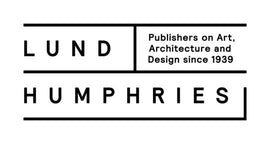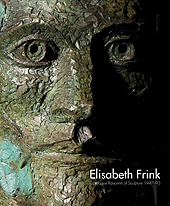Book of the Week: Elisabeth Frink Catalogue Raisonné of Sculpture 1947-93
In April 1993, British sculptor Elisabeth Frink, Dame of the British Empire and RA, died of cancer aged just 62. Her Times obituary noted the three essential themes in her work as ‘the nature of Man; the “horseness” of horses; and the divine in human form’. The New York Times called her a ‘Sculptor of Heads’.
Twenty years later, two important Frink events are taking place: publication of her complete sculpture catalogue, just out, and her first retrospective exhibition in over 25 years, which opens tomorrow.
The retrospective show includes work loaned from the Tate, the Yorkshire Sculpture Park, the Frink Estate and the Ingram Collection of Modern British Art. And it’s taking place at The Lightbox in Woking.
Why has it taken so long for a proper retrospective exhibition? And why is it not taking place at the Tate – or the Royal Academy, where her last major show was held in 1985?
Some clues may lie in those snippets from her obituaries. Her sculpture continued to be figurative while others were turning to abstraction in the 1960s. Her subjects were accessible and human – portrait heads, torsos, figures on horses: traditional sculptural themes ostensibly at odds with the concerns of Modernism. Her interest in horses and dogs played perhaps to an English sentimentality about animals which hid her seriousness of purpose. Added to that, it can’t have been easy being a female sculptor working in what was still very much a male-dominated world.
Our new catalogue raisonné of Frink’s sculpture – the first complete illustrated catalogue of her sculpture in a single volume, published in association with the Frink Estate and Beaux Arts gallery – reinstates her importance within 20th-century British art and demonstrates that serious and popular are not mutually exclusive. Contributors include Arie Hartog, Director of the Gerhard-Marcks Haus in Bremen, who places Frink within a long and uninterrupted history of modern European figurative sculpture, and children’s novelist Michael Morpurgo, who contributes a fictional encounter with a thinly veiled Frink, who was a good friend (they both created a War Horse, Frink having read and enjoyed Morpurgo’s story).
The exhibition at The Lightbox bills Frink as ‘The most celebrated female figurative sculptor in 20th-century Britain’. There is press and media interest in both book and show, with Lin Jammet, the artist’s son, appearing on Radio 4’s Midweek on Wednesday 13 March. Elisabeth Frink returns to the fore.
Lucy Myers, Managing Director
Elisabeth Frink Catalogue Raisonné of Sculpture 1947-93 Edited by Annette Ratuszniak, with a Foreword by Lin Jammet and contributions by Leo A. Daly, Arie Hartog, Michael Morpurgo and Julian Spalding. 2013. Hardback. 208 pages. 203 colour and 212 b&w illustrations. £100 / $200


